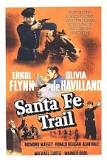|
Digital History>Teachers>Modules> The Coming of the Civil War
Learn About
the Coming of the Civil War

Between 1819 and 1860, the critical issue that divided the North and South was the extension of slavery in the western territories. The Compromise of 1820 had settled this issue for nearly 30 years by drawing a dividing line across the Louisiana Purchase that prohibited slavery north of the line, but permitted slavery south of it.
The seizure of new territories from Mexico reignited the issue. The Compromise of 1850 attempted to settle the problem by admitting California as a free state but allowing slavery in the rest of the Mexican cession. Enactment of the Fugitive Slave Law as part of the Compromise exacerbated sectional tensions.
The question of slavery in the territories exploded once again when Senator Stephen A. Douglas proposed that Kansas and Nebraska territories be opened to white settlement and that the status of slavery be decided according to the principle of popular sovereignty. The Kansas-Nebraska Act convinced many Northerners that the South wanted to open all federal territories to slavery and brought into existence the Republican party, committed to excluding slavery from the territories.
Sectional conflict was intensified by the Supreme Court’s Dred Scott decision, which declared that Congress could not exclude slavery from the western territories and by the abolitionist John Brown’s raid on Harpers Ferry, Virginia.

Some people, said Senator William Seward of New York in 1858, believed that the conflict between North and South was the work of "fanatical agitators." He disagreed. The roots of the conflict go far deeper: "It is an irrepressible conflict between opposing and enduring forces."
Learn why the bonds that had held the country together for seven decades had begun to unravel. Scroll down to the heading, "Impending Crisis."
(Opens in a new window; close that window to return here)

The Fugitive Slave Act of 1850
"Efficient execution of this law"
Frederick Douglass and Gerrit Smith Denounce the Fugitive Slave Law
1851
"We pour out upon the Fugitive Slave Law the fullest measure of our contempt and hate"
(Opens in a new window; close that window to return here)

Handouts and fact sheets:
Sectional Conflict
(Opens in a new window; close that window to return here)
Recommended
lesson plan:
eXploration on John Brown: Hero or Terrorist?
(Opens in a new window; close that window to return here)
Quizzes:
Quiz on the Coming of the Civil War, Answers to the Quiz on the Coming of the Civil War
(Opens in a new window; close that window to return here)

 Recommended books:
Recommended books:
William H. Freehling, The Road to Disunion.
A thorough exploration of the causes of the Civil War.
 Recommended
film: Recommended
film:
 Santa Fe Trail (1940) Santa Fe Trail (1940)
A fanciful recreation of the fight for Kansas during the 1850s with Ronald Reagan, Errol Flynn, and Olivia De Haviland. IMDb: "The story of Jeb Stuart, his romance with Kit Carson Holliday, friendship with George Custer and battles against John Brown in the days leading up to the outbreak of the American Civil War."
Learn more about this film in the Internet Movie Database
http://www.imdb.com/title/tt0033021/
(Opens in a new window; close that window to return here)
 Recommended
Website: Recommended
Website:
John Brown’s Holy War
http://www.pbs.org/wgbh/amex/brown/
(Opens in a new window; close that window to return here)
|
